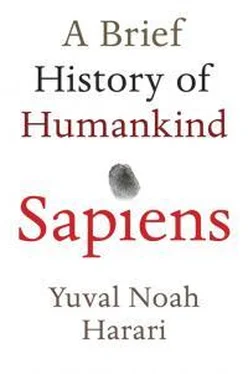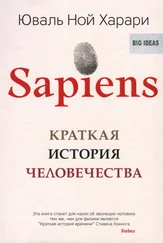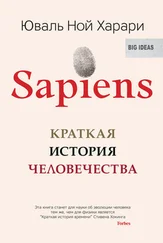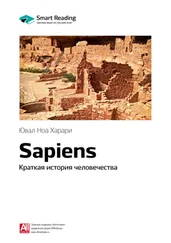Hence any attempt to define the characteristics of modern society is akin to defining the colour of a chameleon. The only characteristic of which we can be certain is the incessant change. People have become used to this, and most of us think about the social order as something flexible, which we can engineer and improve at will. The main promise of premodern rulers was to safeguard the traditional order or even to go back to some lost golden age. In the last two centuries, the currency of politics is that it promises to destroy the old world and build a better one in its place. Not even the most conservative of political parties vows merely to keep things as they are. Everybody promises social reform, educational reform, economic reform – and they often fulfil those promises.
Just as geologists expect that tectonic movements will result in earthquakes and volcanic eruptions, so might we expect that drastic social movements will result in bloody outbursts of violence. The political history of the nineteenth and twentieth centuries is often told as a series of deadly wars, holocausts and revolutions. Like a child in new boots leaping from puddle to puddle, this view sees history as leapfrogging from one bloodbath to the next, from World War One to World War Two to the Cold War, from the Armenian genocide to the Jewish genocide to the Rwandan genocide, from Robespierre to Lenin to Hitler.
There is truth here, but this all too familiar list of calamities is somewhat misleading. We focus too much on the puddles and forget about the dry land separating them. The late modern era has seen unprecedented levels not only of violence and horror, but also of peace and tranquillity. Charles Dickens wrote of the French Revolution that ‘It was the best of times, it was the worst of times.’ This may be true not only of the French Revolution, but of the entire era it heralded.
It is especially true of the seven decades that have elapsed since the end of World War Two. During this period humankind has for the first time faced the possibility of complete self-annihilation and has experienced a fair number of actual wars and genocides. Yet these decades were also the most peaceful era in human history – and by a wide margin. This is surprising because these very same decades experienced more economic, social and political change than any previous era. The tectonic plates of history are moving at a frantic pace, but the volcanoes are mostly silent. The new elastic order seems to be able to contain and even initiate radical structural changes without collapsing into violent conflict. 3
Peace in Our Time
Most people don’t appreciate just how peaceful an era we live in. None of us was alive a thousand years ago, so we easily forget how much more violent the world used to be. And as wars become more rare they attract more attention. Many more people think about the wars raging today in Afghanistan and Iraq than about the peace in which most Brazilians and Indians live.
Even more importantly, it’s easier to relate to the suffering of individuals than of entire populations. However, in order to understand macro-historical processes, we need to examine mass statistics rather than individual stories. In the year 2000, wars caused the deaths of 310,000 individuals, and violent crime killed another 520,000. Each and every victim is a world destroyed, a family ruined, friends and relatives scarred for life. Yet from a macro perspective these 830,000 victims comprised only 1.5 per cent of the 56 million people who died in 2000. That year 1.26 million people died in car accidents (2.25 per cent of total mortality) and 815,000 people committed suicide (1.45 per cent). 4
The figures for 2002 are even more surprising. Out of 57 million dead, only 172,000 people died in war and 569,000 died of violent crime (a total of 741,000 victims of human violence). In contrast, 873,000 people committed suicide. 5It turns out that in the year following the 9/11 attacks, despite all the talk of terrorism and war, the average person was more likely to kill himself than to be killed by a terrorist, a soldier or a drug dealer.
In most parts of the world, people go to sleep without fearing that in the middle of the night a neighbouring tribe might surround their village and slaughter everyone. Well-off British subjects travel daily from Nottingham to London through Sherwood Forest without fear that a gang of merry green-clad brigands will ambush them and take their money to give to the poor (or, more likely, murder them and take the money for themselves). Students brook no canings from their teachers, children need not fear that they will be sold into slavery when their parents can’t pay their bills, and women know that the law forbids their husbands from beating them and forcing them to stay at home. Increasingly, around the world, these expectations are fulfilled.
The decline of violence is due largely to the rise of the state. Throughout history, most violence resulted from local feuds between families and communities. (Even today, as the above figures indicate, local crime is a far deadlier threat than international wars.) As we have seen, early farmers, who knew no political organisations larger than the local community, suffered rampant violence. 6As kingdoms and empires became stronger, they reined in communities and the level of violence decreased. In the decentralised kingdoms of medieval Europe, about twenty to forty people were murdered each year for every 100,000 inhabitants. In recent decades, when states and markets have become all-powerful and communities have vanished, violence rates have dropped even further. Today the global average is only nine murders a year per 100,000 people, and most of these murders take place in weak states such as Somalia and Colombia. In the centralised states of Europe, the average is one murder a year per 100,000 people. 7
There are certainly cases where states use their power to kill their own citizens, and these often loom large in our memories and fears. During the twentieth century, tens of millions if not hundreds of millions of people were killed by the security forces of their own states. Still, from a macro perspective, state-run courts and police forces have probably increased the level of security worldwide. Even in oppressive dictatorships, the average modern person is far less likely to die at the hands of another person than in premodern societies. In 1964 a military dictatorship was established in Brazil. It ruled the country until 1985. During these twenty years, several thousand Brazilians were murdered by the regime. Thousands more were imprisoned and tortured. Yet even in the worst years, the average Brazilian in Rio de Janeiro was far less likely to die at human hands than the average Waorani, Arawete or Yanomamo. The Waorani, Arawete and Yanomamo are indigenous people who live in the depths of the Amazon forest, without army, police or prisons. Anthropological studies have indicated that between a quarter and a half of their menfolk die sooner or later in violent conflicts over property, women or prestige. 8
Imperial Retirement
It is perhaps debatable whether violence within states has decreased or increased since 1945. What nobody can deny is that international violence has dropped to an all-time low. Perhaps the most obvious example is the collapse of the European empires. Throughout history empires have crushed rebellions with an iron fist, and when its day came, a sinking empire used all its might to save itself, usually collapsing into a bloodbath. Its final demise generally led to anarchy and wars of succession. Since 1945 most empires have opted for peaceful early retirement. Their process of collapse became relatively swift, calm and orderly.
In 1945 Britain ruled a quarter of the globe. Thirty years later it ruled just a few small islands. In the intervening decades it retreated from most of its colonies in a peaceful and orderly manner. Though in some places such as Malaya and Kenya the British tried to hang on by force of arms, in most places they accepted the end of empire with a sigh rather than with a temper tantrum. They focused their efforts not on retaining power, but on transferring it as smoothly as possible. At least some of the praise usually heaped on Mahatma Gandhi for his non-violent creed is actually owed to the British Empire. Despite many years of bitter and often violent struggle, when the end of the Raj came, the Indians did not have to fight the British in the streets of Delhi and Calcutta. The empire’s place was taken by a slew of independent states, most of which have since enjoyed stable borders and have for the most part lived peacefully alongside their neighbours. True, tens of thousands of people perished at the hands of the threatened British Empire, and in several hot spots its retreat led to the eruption of ethnic conflicts that claimed hundreds of thousands of lives (particularly in India). Yet when compared to the long-term historical average, the British withdrawal was an exemplar of peace and order. The French Empire was more stubborn. Its collapse involved bloody rearguard actions in Vietnam and Algeria that cost hundreds of thousands of lives. Yet the French, too, retreated from the rest of their dominions quickly and peacefully, leaving behind orderly states rather than a chaotic free-for-all.
Читать дальше



![Юваль Ной Харари - Sapiens. Краткая история человечества [litres]](/books/34310/yuval-noj-harari-sapiens-kratkaya-istoriya-cheloveche-thumb.webp)





![Юваль Ной Харари - 21 урок для XXI века [Версия с комментированными отличиями перевода]](/books/412481/yuval-noj-harari-21-urok-dlya-xxi-veka-versiya-s-ko-thumb.webp)


